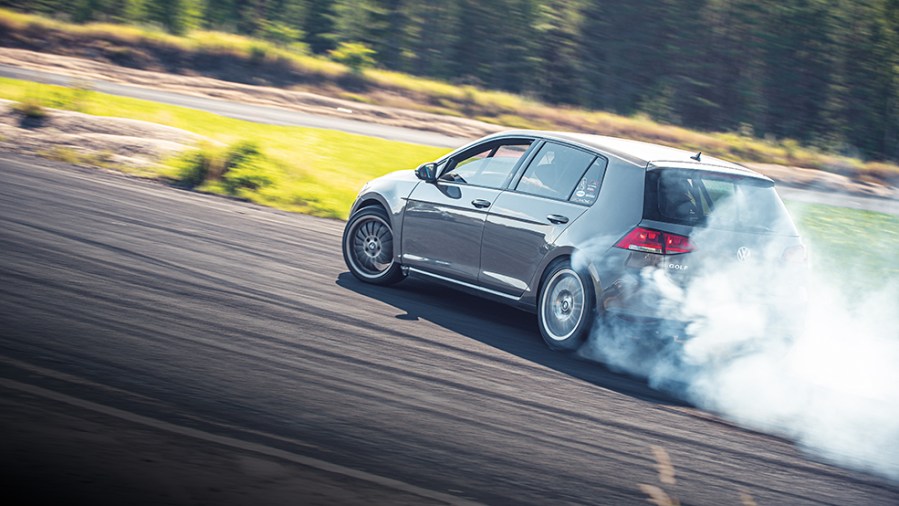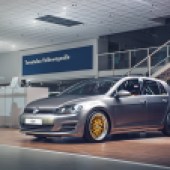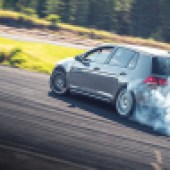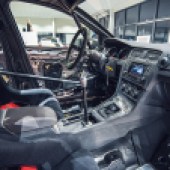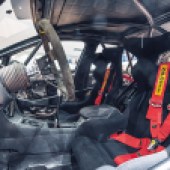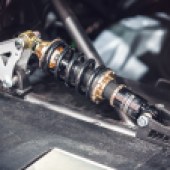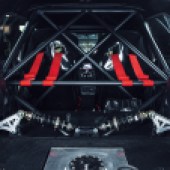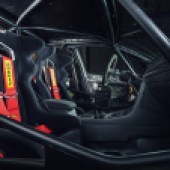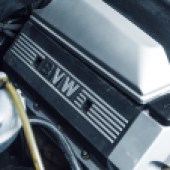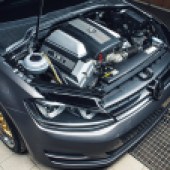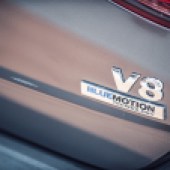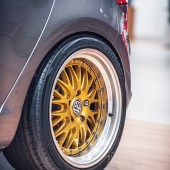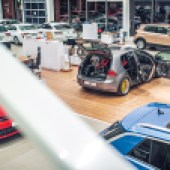A mild-spec Mk7 Golf wouldn’t be most people’s first choice for a drift car, but most of them don’t have a 4.0-litre V8 putting power to the back wheels.
Feature From Performance VW. Words: Alex Grant. Photos: Matti Tirronen.
As motorsports go, few can match the diversity in the paddocks that you’ll get with the drift scene. Even professional events attract every shade of the automotive spectrum, from Japanese coupes to Swedish wagons, united only by the ability to put power to their rear axle. So while Golfs have been tracked, rallied and dragged for as long as they’ve been available to buy, you won’t find many rubbing shoulders with the drift fraternity. After all, that would mean pretty much starting from scratch, right?
“It was sort of an accident buying this car,” says Toni Varelius, as we line up what appears to be a standard Mk7 Golf at the showroom where he works. “I wanted a drift missile at the time, so I joked to my friends about building one out of a Golf. They laughed and said it was the dumbest idea they had ever heard. So I took it as a challenge, to prove them wrong.”
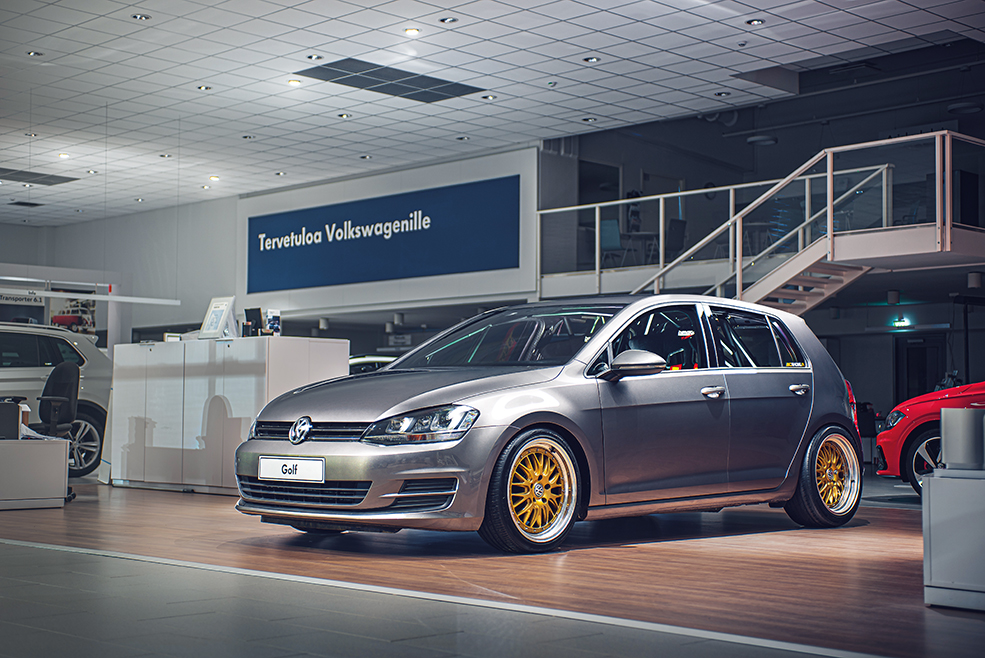
Perhaps as a result of its 18-hour winter nights, Finnish workshops are a hotbed for the sort of no-holds-barred re-engineering you’re looking at here. Beneath the unmodified bodywork of a cooking-spec Mk7, the visible bars of a substantial roll cage let slip that there’s a little more muscle packed into this car than Wolfsburg ever equipped it with. Namely the unmistakeable bellow of four litres, eight cylinders and tortured rear tyres that have turned pre-project mockery into wide-eyed approval. And yes, it essentially meant the car had to be rebuilt from scratch.
It takes a lifetime of learning to reach this level of mechanical fearlessness. Toni grew up around his dad selling cars before following the same career path into the local Volkswagen showroom. When he’s not there, he’s one of the six-strong team behind the Maailmanlopun Vehkeet (MLV) workshop on Finland’s south coast.
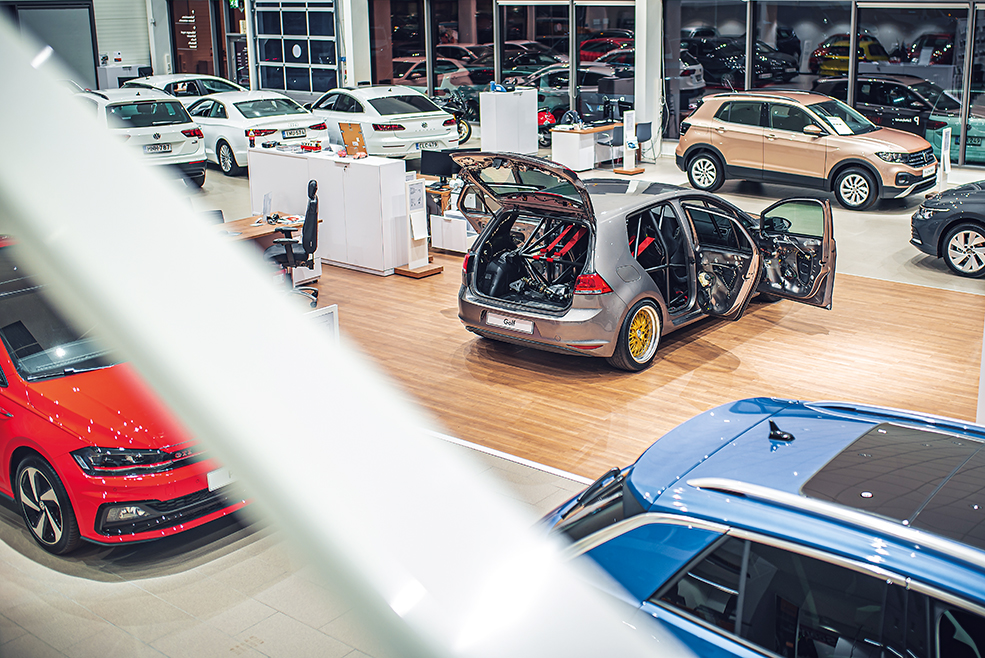
Although he’s not a one-marque kind of guy, there’s always been something in the garage with a Volkswagen badge, and it’s usually keeping a drift car company. The Golf might look like an entanglement of those two threads on the same chassis, but Toni is quick to point out that this all started a little more impusively.
“I’ve been drifting for ten years on the street and six or seven on track. In winter 2018-19 I built a road legal Nissan Silvia drift car, but it turned out so clean that I felt guilty going full send with it. So during the summer I was thinking about making a seat-time stallion, and I was settling on the idea of putting a V8 into an E36 3 Series Compact. Then this car turned up at work, and those plans changed.”
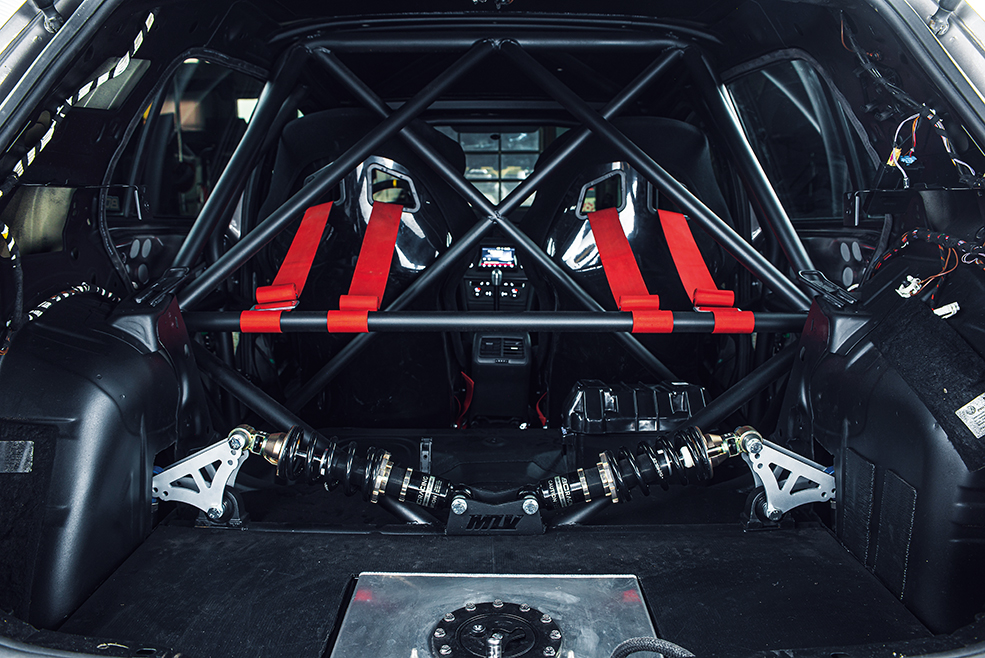
That’s a bit of a leap, surely? “Yeah, I have a big mouth,” he laughs. “It had hit the central reservation on the highway and the impact had ripped the driver’s side front wheel off, so the whole front end was badly damaged. I made an offer on it as a joke, then a couple of weeks later my colleague called to say my offer had been accepted. Then suddenly I had a wrecked Golf on my hands and a reason to rebuild it.”
Having had the donor shell decision made for him, Toni could channel his efforts into finding a suitable drivetrain. Those choices become a little more time-consuming when you’re more concerned about what works best as a drift car than whether your chosen hardware drops straight into the engine bay without reaching for the grinder. So the Golf almost ended up with Toyota’s 2JZ under the bonnet, building on what he knew from the 1JZ he’d had in the Silvia, and the Nissan SR20 four-pot was also on the shopping list. Finland’s spare parts market had other ideas.
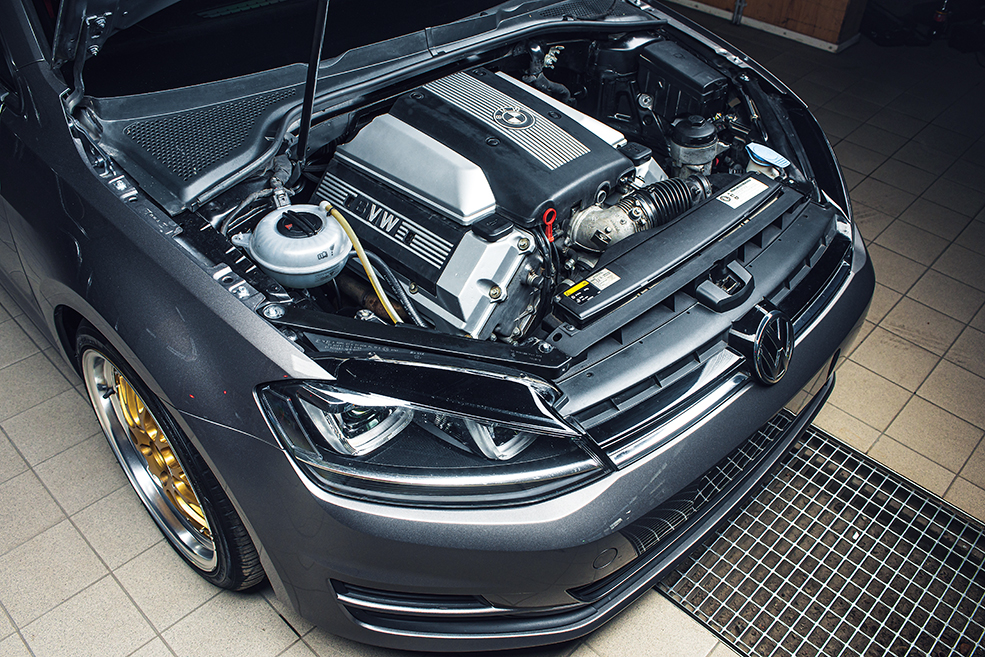
“A few years ago I bought a BMW 1502 drift car with an M60 V8,” he tells us. “It was terrible to drive – I am 194cm tall, so I didn’t fit behind the wheel – but mechanically it worked like a dream the whole time I owned it. So I had a lot of good memories of that engine and, within an hour of a friend sending me a link to one that was for sale in a neighbouring town, I was on my way to pick it up.”
Rein in your scepticism for a minute, because it’s not as ridiculous an idea as it sounds. BMW developed the M60-series V8s for the luxury end of its 1990s model range, which means they’re a generation or two ahead engines of a similar vintage. The block is aluminium, compared to the iron used in even the newest VR6s, while the crank is forged and the cylinders are lined with the same low-friction nikasil coating as the RS Porsches and Formula One cars of the same era.
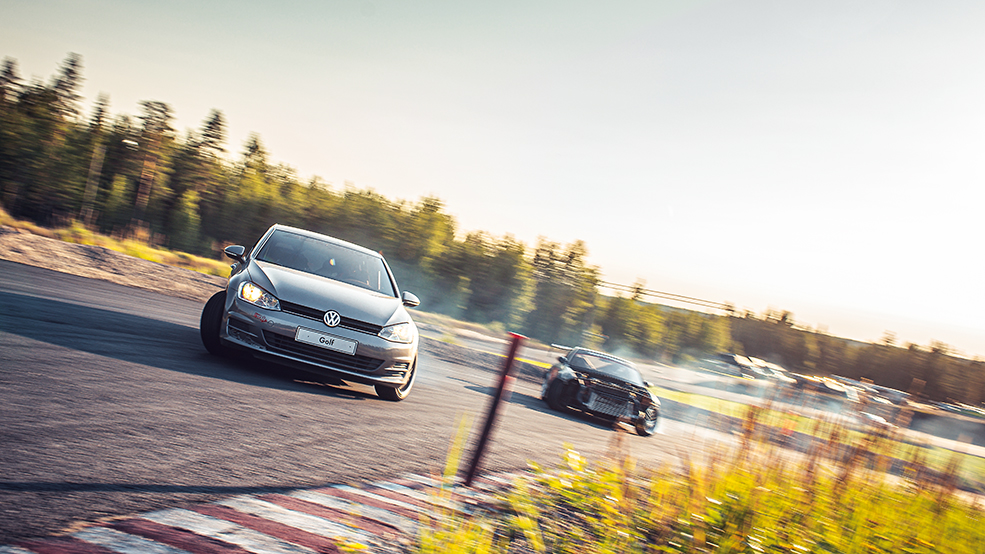
The result? It’s not significantly heavier than a four-pot with the ancillaries bolted on, makes a 300hp without the reliability headaches of forced induction, and the donor 740i would have spent its life barely scratching the surface of that performance in its 300,000km of long-haul driving. All Toni had to do was persuade the mechanical guts of an executive limousine to make themselves at home in a hatchback. Can’t have been too hard…
Of course, the first hurdle was righting the damage done by the Golf’s previous owner. Repeat trips to the parts department at work offered up a full set of standard panels and associated repair parts to restore the Mk7 back to factory condition. With the extra performance on tap, you’d let him off some subtle arch flaring and maybe even a GTI kit. However, Toni clearly prefers the element of surprise, right down to the original paint code, halogen headlamps and ironic Bluemotion Technology badge on the tailgate. Recycled parts aside, it’s no eco warrior.
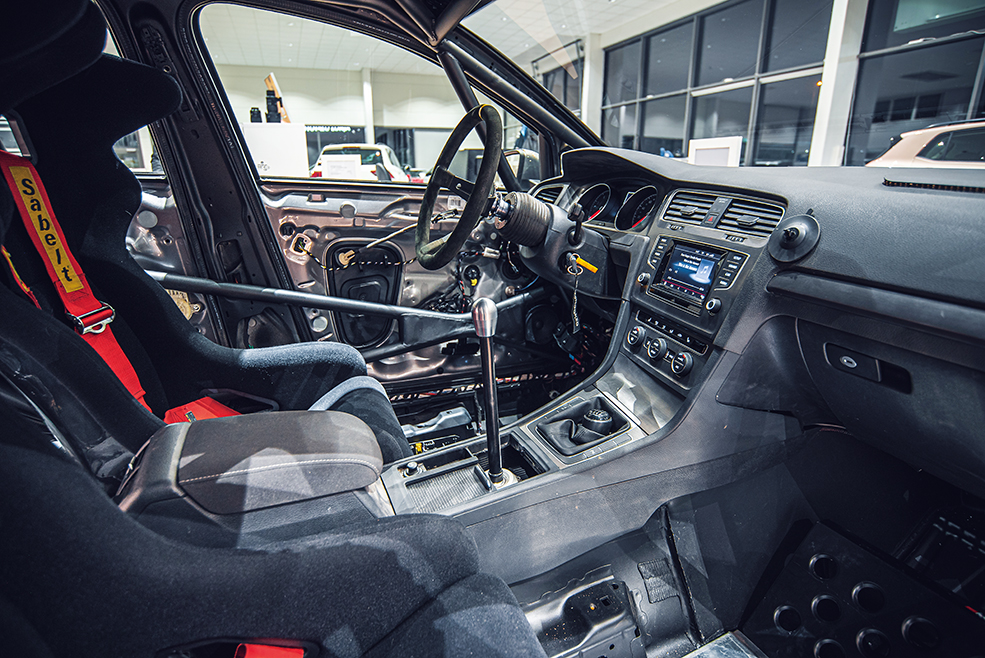
The scale of the engineering challenge only comes to light once it’s on a ramp. Rotating the engine 90 degrees and finding space for a gearbox, propshaft and rear differential under the cabin generated plenty of scrap metal and the sort of ‘to-do’ list that would make most of us reconsider going any further. The central tunnel, though designed to accommodates four-wheel drive, had to be heavily modified, the boot floor is custom made and the firewall was cut out almost to the bottom of the windscreen to free up some clearance. That the engine looks almost factory-fitted says a lot about the effort involved.
Not surprisingly, most what’s bolted to the body now has a BMW part number. The front subframe, steering rack, hubs and brakes are from an E36 3 Series, while the back end and is loosely based on an E39 525i and features a welded diff paired with the modified driveshafts and prop. With no east-west mounted drivetrain to get in the way at the front, the steering arms were extended by 75mm using a Wizards of Lock kit, enabling the front wheels to pivot almost 70 degrees from dead centre. Those are angles the factory parts couldn’t manage even after a high-speed encounter with a central reservation.
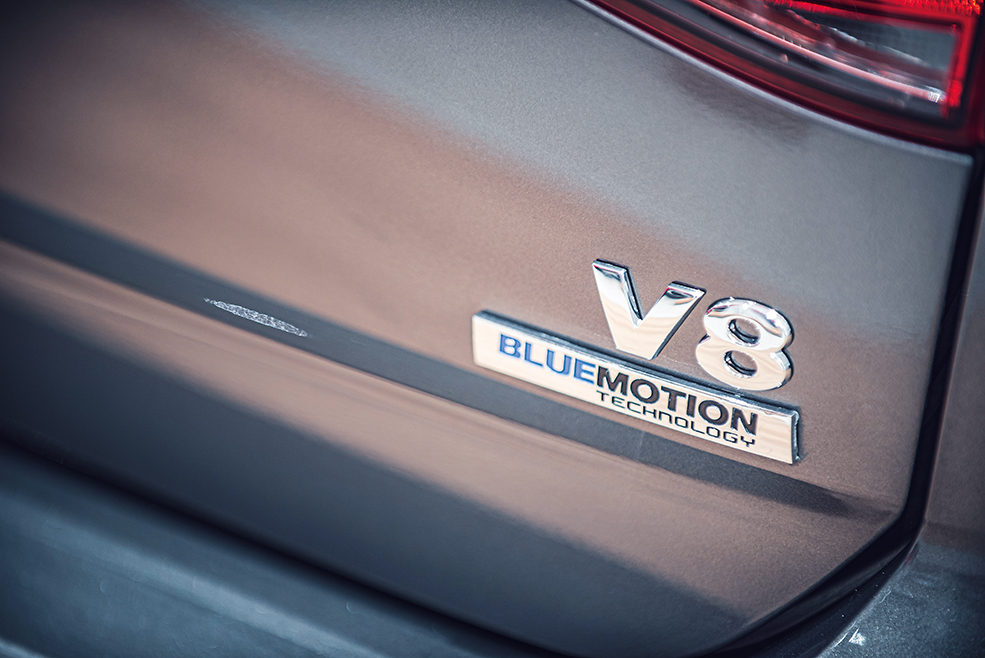
“Nothing was unexpected, because I expected a lot of problems at the start,” continues Toni, a broad smile creeping across his face. “But there was more work involved in fitting the powertrain than I thought, and only the driver and passenger floorpan is original. We used a lot of cutting discs…”
With the V8 in place, the Golf had become enough of a mash-up that no off-the-shelf suspension parts would fit. Luckily, Toni has a good friend at BC Racing in Finland who could fill in the gaps. The front end is essentially an E36 coilover system, but modified to bolt up to the Golf’s standard top mounts, and the headaches didn’t stop there.
At the back, the standard upright strut layout would have limited the harder-working wheels to seven inches wide. To get around that would-be compromise, the Mk7 Golf drift car features a scratch-built pushrod system tied into a tubular frame under the boot, while the coilovers are largely based on BC Racing’s kit for the Lamborghini Gallardo.
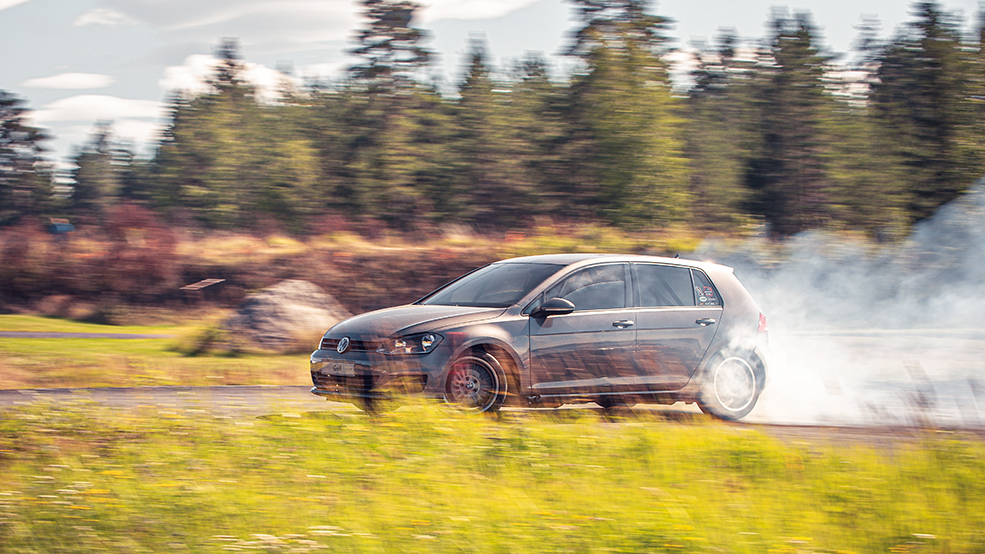
Within that hybrid chassis, the gearbox is a ZF five-speed manual from a 530d – an option so cheap and plentiful that he ended up with a spare. Because the later M62 V8 was also used by former BMW subsidiary Land Rover, Toni adapted a set of Range Rover exhaust manifolds and ran three-inch stainless pipework to a single silencer at the back, tucked in around a 30-litre fuel cell.
The cabin is also worlds away from this car’s past life. More than 42 metres of roll cage were added to the shell to brace every possible flex point, not only for safety but to dial in more predictable handling on track. Despite the extent of the fabrication in the centre tunnel, Toni managed to re-fit the original dashboard and make sure all of the instruments and touchscreen still work. Close the bonnet and the only hint of its new drivetrain layouts is the lengthy gearstick bursting out of the cupholders in the centre console a few inches behind the original.
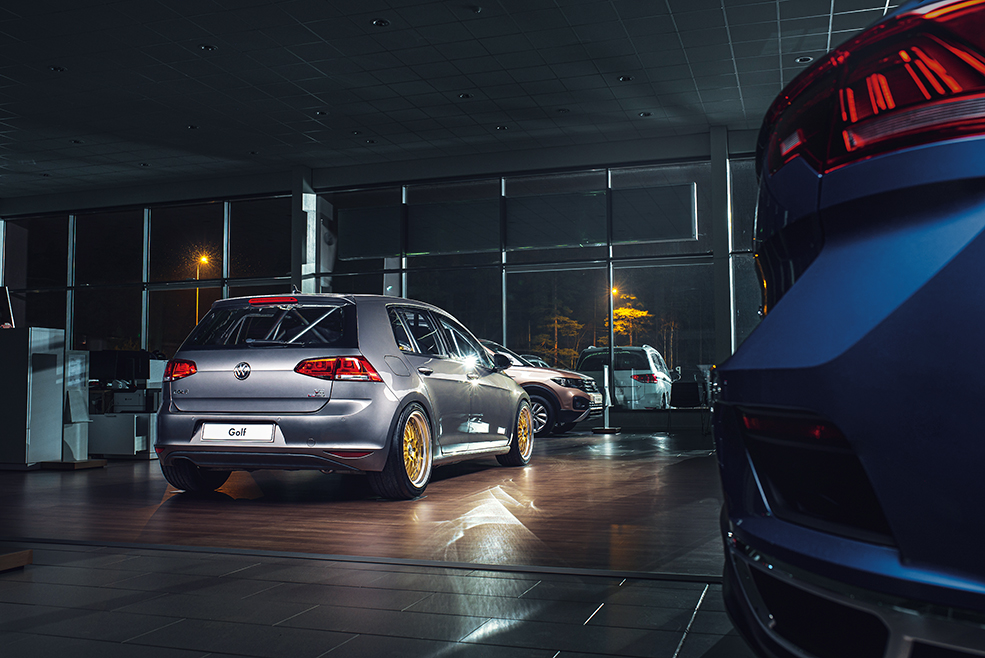
But, he adds, creature comforts like electric windows and functioning Bluetooth don’t mean it’s been built as a part-time daily. “There is no way I’d be able to take this kind of project on the road legally. The Finnish road regulations are brutal, but we have an option to take temporary plates for one day to drive it on the road. So I can use those to drive to events, but that’s it,” he says.
Six months after his big mouth had got the build off the ground, the Golf rolled onto the dyno under its own steam in April, putting down an effortless 300hp and 400Nm through its 10.5J rear wheels. Despite doubling the cylinder count and filling the cabin with roll cage, it tips the scales at 1,300kg – or around 50kg less than a Mk7 GTI, and it hasn’t been built for show. Run as is except for a set of 17″ track wheels, it’s put in a season of drift events looking a little like someone’s strayed onto the track with a rent-a-car. Well, aside from that soundtrack we mentioned earlier, obviously, and how it feels from behind the wheel.
“It compares very well to the typical drift cars – it’s better set up for it than my Silvia. The BMW axles mean it’s awesome to drive, and if you close your eyes you could imagine you’re driving a really well set up E46,” says Toni.
“However, I think it needs more power – most of my friends have between 400 and 600hp, so if I want to bang doors with them on track then I need to increase the performance. If I can find the money, I’ll turbocharge it, which should take it up to 500hp. It can take that abuse all day, every day. I can only imagine how savage this car will be with that much power.”
The biggest bottleneck it’s facing is the workshop’s other Volkswagen-badged resident. In 2012, Toni rescued a ’74 Swallowtail Mk1 racecar from a field, and he’s spent the years since steadily chasing a decade of weather-related damage out of the bodyshell. Having been distracted by other projects, the aim is to get it back on the road next year, with a shaved engine bay and twin-carb’d 2.0-litre 16v putting power – as Volkswagen intended – to the front wheels. It’s something to keep him amused as those long winter nights set in.
So the Mk7 Golf drift car is getting a breather, but not for long. Turbocharged or not, this understated German muscle car should be back rubbing shoulders with unsuspecting drifters next summer. Sure, it’s fallen in line with the usual suspects with its ability to smoke the rear tyres, but it’s yet another shade of the automotive spectrum in a motorsport where seemingly anything goes. All Toni had to do was start from scratch.
Tech Spec: Mk7 Golf drift car
Engine:
3982cc, naturally-aspirated, V8 (M60B40) from BMW E38 740i, modified Range Rover manifolds, custom 3.0-inch stainless steel exhaust system with single silencer, ZF GS5-39DZ five-speed manual gearbox from E39 530d, modified E39 525i prop shafts, driveshafts and welded 3.67:1 differential, custom-made firewall, transmission tunnel and boot floor, 30-litre aluminium fuel cell, Bosch 044 fuel pump, aluminium fuel lines
Chassis:
E36 3 Series subframe and steering rack (front), Wizards of Lock E36 steering lock kit with 75mm lower arm extensions and E90 3 Series tie rods, E39 5 Series subframe (rear), BC Racing coilovers with E36 lower mounts and Mk7 Golf top mounts (front), MLV custom pushrod rear suspension with modified Lamborghini Gallardo coilovers (rear), E36 325i calipers and 286mm discs (front), E39 525i calipers and 296mm discs (rear), 18×9.5 (front) and 18×10.5 (rear) Lenso CL5 wheels with 225/40 (front) and 245/40 Zeetex Green Max tyres
Exterior:
Standard bodywork, V8 and ‘Bluemotion Technology’ badges
Interior:
Stripped interior, custom roll cage, Bimarco Hummer bucket seats, Sabelt harnesses, suede-rimmed steering wheel with snap-off

